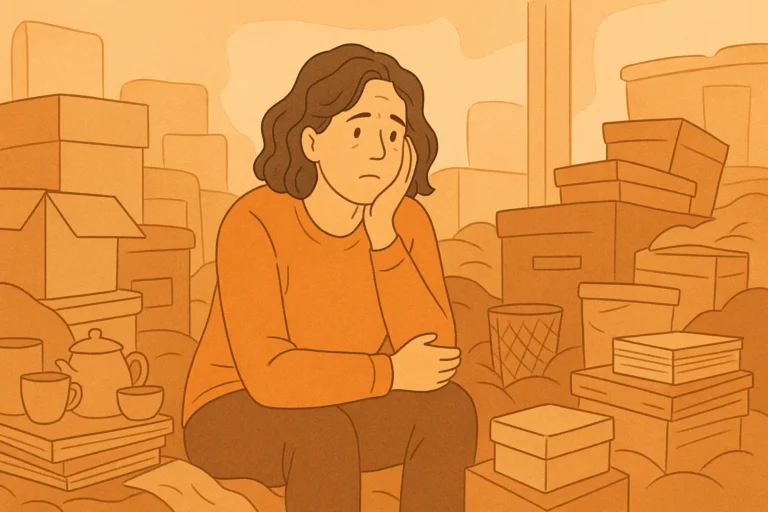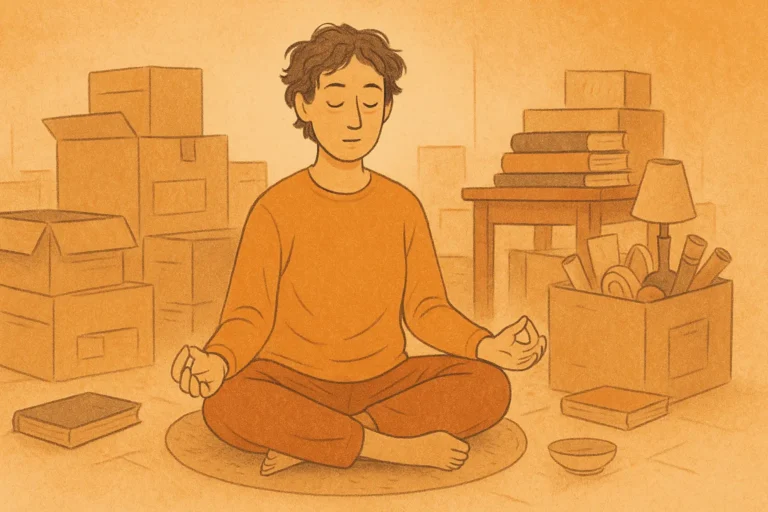Hoarding Recovery: 7 Tiny Wins That Help You Start Letting Go
Hoarding can feel overwhelming. The clutter, the emotional attachment, the “what if I need this?” thoughts—it’s a lot. But recovery doesn’t have to mean tossing everything at once. It can start small.
The truth is: You don’t need a huge clean-out to begin recovering from hoarding. You just need a few small, manageable wins that build momentum.
In this post, I’ll walk you through seven tiny steps that actually help. They’re simple, doable, and come with zero judgment. Let’s get into it.
1. Toss One Useless Item Per Day
This is the easiest place to start.
Just one thing. That’s it. Not a whole drawer. Not a box. Just one item you know is trash. A dried-out pen. A broken charger. An expired coupon. Something you haven’t used in years and wouldn’t miss if it vanished.
The win here is psychological. When you choose to let go, even of something tiny, you’re building a habit. You’re teaching your brain: “Hey, I can do this. And nothing bad happened.”
Start with one item per day. You can increase it later, but don’t rush.
2. Pick a “Neutral Zone” and Keep It Clutter-Free
Choose one small area in your home—a coffee table, a corner of the kitchen counter, a chair. Declare it a clutter-free zone.
This space becomes your visual reset button. No piles allowed. No junk mail. Just a clean space that reminds you of what calm looks like.
It feels good to have even one clean area. It shows your mind that order is possible, even in chaos. And once you get used to seeing that peaceful spot, you’ll probably want more of them.
3. The “Touch It Once” Rule
We all do it: we move things from one pile to another without really dealing with them. But here’s a simple habit shift that changes everything:
Touch it once.
If you pick something up—decide what to do with it right then. Keep, toss, donate, or put away. No setting it aside “for later.”
This helps stop clutter from shuffling around endlessly. It also builds decision-making strength, which is something many hoarders struggle with.
Is it easy at first? Not always. But it gets easier with practice.
4. Ask Yourself This One Question
If you’re stuck on whether to keep something, ask:
“If I didn’t already own this, would I go out and buy it?”
This flips the emotional script. Instead of focusing on the guilt of letting go, you’re thinking logically: Do I even like or need this?
If the answer is no, then maybe it’s time to part ways. You don’t have to toss it right away—just notice the answer. That alone is progress.
5. Take Before-and-After Photos
Sounds silly, but it’s powerful.
Before you clear a drawer, shelf, or table, snap a photo. Then take another one after. It doesn’t have to be perfect—just a visible difference.
These photos give you something to celebrate. They show proof of progress. You’ll start to believe: “I can do this.”
Sometimes we’re so used to the clutter, we don’t even notice how far we’ve come. A photo makes that progress real.
6. Try the “10-Minute Toss”
Set a timer for 10 minutes. That’s all.
In those 10 minutes, go through one small space—a junk drawer, a shoe pile, a part of your closet—and let go of anything you clearly don’t need.
Ten minutes is short enough that it won’t exhaust or overwhelm you. It’s just enough to get your brain moving, and many people find they want to keep going even after the timer ends.
Make it a daily habit, like brushing your teeth. Same time each day, same small effort. Big change comes from small routines.
7. Make a “Maybe” Box
Let’s be real—some things are hard to decide on.
That’s okay. Instead of forcing a decision, make a “Maybe” box. Label it. Put it somewhere out of the way.
Put items inside that you’re unsure about. Here’s the catch: set a reminder on your phone to check the box in 30 days. If you didn’t need or think about anything in that box during that time, you’re probably safe to let it go.
This gives you space between emotion and action. And that space helps build confidence.
Bonus Tip: Celebrate the Tiny Wins
Recovery from hoarding isn’t about becoming a minimalist overnight. It’s about changing your relationship with stuff—one small win at a time.
So when you throw away that old receipt or finally let go of a chipped mug, celebrate it. Say it out loud. Tell a friend. Write it down in a notebook.
These tiny moments matter. They stack up.
Why Tiny Wins Work Better Than Big Cleanouts
Most people think hoarding recovery means renting a dumpster and getting rid of everything in a weekend. That usually backfires.
Here’s why:
- It creates panic and regret.
- It doesn’t teach you how to decide—someone else usually makes the choices.
- It overwhelms your brain’s ability to process change.
Tiny wins, on the other hand, build your decision-making muscle. They help you form habits. They give you confidence and control—two things hoarding often steals from you.
The clutter didn’t pile up overnight, so you don’t need to fix it overnight. You just need to start.
Final Thoughts: You Don’t Have to Be Perfect—Just Willing
You’re not lazy. You’re not broken. You’re someone who developed a tough relationship with stuff—and you’re working on it.
That’s huge.
Start small. Stay consistent. Celebrate the tiny wins. Before long, your home will start to feel lighter, and so will you.
You’ve got this.


